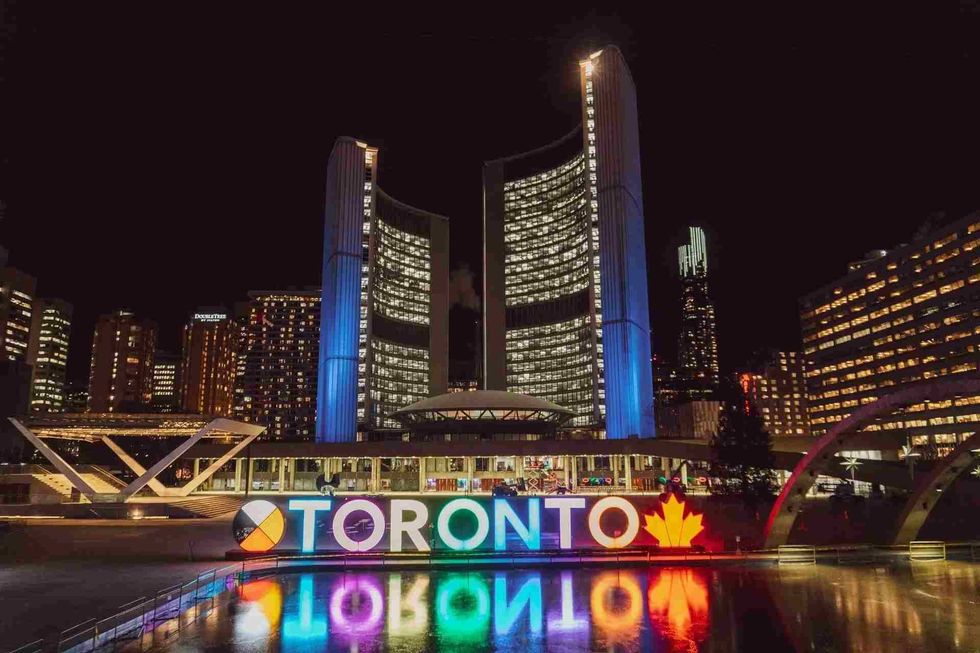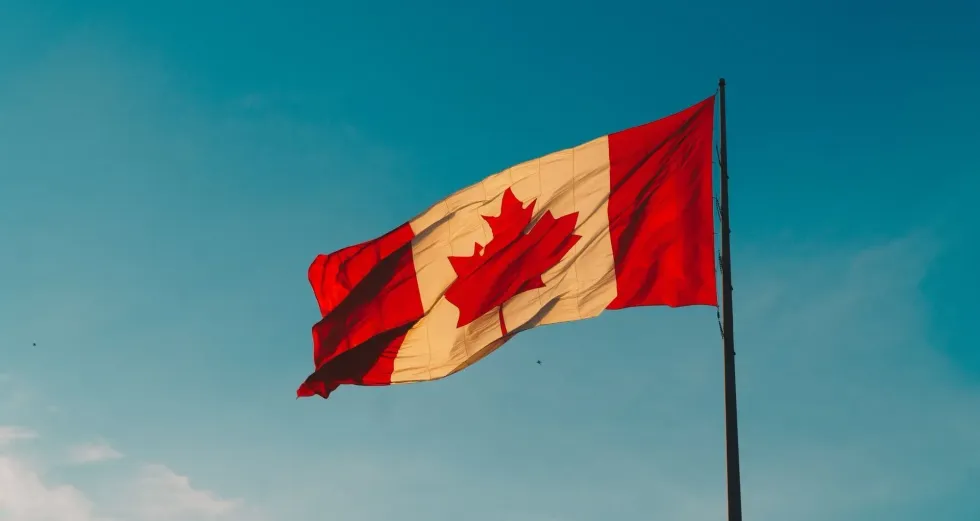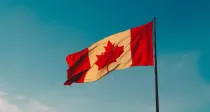Complete Guide To Canada Provinces And Territories For Kids

Canada is known to be the second-largest country in the world and occupies the northern part of North America.
Canada is bound by the North Atlantic Ocean on the east, the North Pacific Ocean on the west, and the Arctic Ocean at its north.
It borders Alaska in the U.S.A. to its west and the mainland part of the United States in the south. Its boundary with its southern neighbor runs fundamentally along the 45th parallel (north). This is the world's longest boundary between two nations.
The major difference between states and territories has to do with the government. The territory delegates authority under the Parliament of Canada. They are grouped and governed by the federal government. Meanwhile, the state exercises constitutional power. This imbalance in power is gradually offset by giving the region local decision-making power.
The most established settlement of the British Empire and an essential prize in Canadian history, the Canadian territory has for some time been known for its fisheries, beachfront fishing towns, and unmistakable culture. The powers moving from the Constitution are split between the Government of Canada, the national government and the commonplace states.
Mount Logan, situated in the Yukon, is the highest mountain in Canada.
It is named to pay tribute to Sir William Logan, a world-renowned geologist, brought into the world in Montreal in 1798 to Scottish worker guardians. Montreal, Canada's second-largest city and the second biggest chiefly French-talking city on the planet after Paris, is well known for its social variety.
In modern Canadian constitutional hypothesis, the regions are viewed as co-sovereign inside specific regions dependent on the divisions of obligation between the commonplace and central government inside the Constitution Act 1867.
Every region consequently has its own agent of the Canadian Crown, the lieutenant lead representative.
The powers moving from the Constitution Act are split between the Government of Canada, the federal government and the common states, to practice solely.
A change to the division of abilities between the federal government and the areas requires a sacred revision, though a comparable change influencing the domains can be performed singularly by the Parliament of Canada or the government.
The Northwest Territories were immense right away, including all of current northern and western Canada, with the exception of the British possessions in Canada's Arctic islands and the Colony of British Columbia.
If you enjoy reading this article, you could also read about Florida facts and facts about Cuba here on Kidadl.
How many provinces does Canada have?
Canada is technically divided into 10 provinces and three territories. Each state has its own geographical and demographic characteristics. There are 10 Canadian provinces: Alberta, Manitoba, New Brunswick, British Columbia, Newfoundland and Labrador, Ontario, Prince Edward Island, Quebec, and Saskatchewan.
Alberta is one of Canada's western states and is Canada's fourth-largest state. The population of Alberta is about 4,068,000, and the capital of the state is Edmonton. The economy of Alberta is very strong, supported primarily by oil, natural gas, forestry, and tourism.
It has large mountains and wide plains and is mainly covered with northern forests. Alberta is one of Canada's three prairie provinces. The official language of this province is English.
Alberta is the most crowded Prairie province. The area, and the world-popular Lake Louise in the Rocky Mountains, were both named after Princess Louise Caroline Alberta, the fourth child of Queen Victoria. Alberta has five public parks, including Banff National Park, set up in 1885.
Manitoba is Canada's fifth-most populous state, with an estimated population of approximately 1.3 million. The capital of this province is Winnipeg. Most of Manitoba is subarctic, although there are some warm and moist continental regions in the south of Manitoba.
Manitoba's economy relies primarily on natural resources, and in addition to tourism, it also relies on industries such as mining, forestry, and agriculture. Over 200 different languages are spoken in Manitoba. Manitoba is the most prairie province and longitudinal focus of Canada.
Ontario is made up of two regions with very different personalities: northern and southern Ontario. Ontario is Canada's most crowded territory, by far.
It is additionally home to the government capital of Ottawa and the informal monetary capital of Toronto. Ontario is most popular for Algonquin Park, the Niagara wine locale, Bruce Trail, and the numerous delightful woodlands and lakes.
Ontario is also the country's richest province, having a generous portion of the country's regular assets and its generally full-grown and broadened modern economy. Ontario is immediately Canada's financial pacemaker and significant power in public governmental issues.
British Columbia is Canada's westernmost province, holding a population of approximately 5.2 million, slightly larger than Alberta. British Columbia is located on the west coast of North America, between the Rocky Mountains and the Pacific Ocean.
British Columbia is considered to be the most western province in Canada. It is additionally known for mining, fishing, and the natural product plantations and wine industry of the Okanagan Valley.
New Brunswick is one of the eastern Canadian provinces. New Brunswick is located on the Atlantic coast of North America.
Due to its proximity to major US cities, the state is an important tourism center and has a significant economic impact along with forestry, fishing, and agriculture. Newfoundland and Labrador is the easternmost state of Canada. The estimated population of this province is 528,000.
Nova Scotia is also located on the Atlantic coast and is Canada's second-smallest land province. The province is fiercely populated, with approximately 925,000 people living on just 55,200 square kilometers of land. Nova Scotia is the second most thickly populated in the country.
It is one of three Maritime areas and a portion of what structures Atlantic Canada. Nova Scotia has a long history of coal mining, ranger service, and agribusiness.
Today there is additionally seaward oil and gas investigation. The area's Celtic and Gaelic customs support a dynamic culture. Nova Scotia is home to more than 700 yearly celebrations, remembering the terrific military tattoo for Halifax.
Prince Edward Island is Canada's smallest province, known for its seashores, red soil, and agribusiness, particularly potatoes. Newfoundland and Labrador are the easternmost points touching North America and have their own time region. In addition to the natural beauty, this region has an extraordinary legacy connected to the ocean.
The Birthplace of Confederation is Prince Edward Island, which is associated with mainland Canada by one of the longest nonstop multi-span bridges on the planet, the Confederation Bridge. The remainder of the three Maritime areas, Prince Edward Island, is really comprised of a few islands including the main island, the biggest having the same name.
P.E.I. is most popular for the original Anne of Green Gables, which happens there, just as the flavorful mussels found in the encompassing waters.
Canada Provinces And Territories
Only about 40,000 people live in the Northwest Territories of Canada. The state has large areas characterized by forests and mountains. The southern half of this region is almost entirely subarctic, with tundra spots in the northern half. The Northwest Territories relies on the mining of products such as natural gas, oil, gold, and diamonds to support its economy.
Canada's three territories are the Northwest Territories, Nunavut, and Yukon.
The Northwest Territories are lined by Canada's two different domains, Nunavut toward the east and Yukon toward the west, and by the regions of British Columbia, Alberta, and Saskatchewan toward the south.
Nunavut Territory is Canada's newest region. This region was separated from the Northwest Territories in 1999 with a population of 35,944.
This territory was set up in 1999 from the eastern piece of the Northwest Territories, including all of the previous District of Keewatin. The region is almost entirely composed of tundra, with subarctic regions to the south and polar ice sheets to the north. Mining, hunting, fishing, and tourism support the state's economy.
This region is the largest among Canada's provinces and territories. The capital of this territory is Iqaluit, which was formerly known as Frobisher Bay.
The Yukon Territory is Canada's smallest and westernmost region, bordering Alaska. About 34,200 people live in Yukon.
Most people live in the capital, Whitehorse. The climate of Yukon is mainly subarctic, and the region is full of mountains, rivers, and forests. Once this territory was covered by mining, manufacturing, clothing, hydropower, fishing, and government sectors are now the main drivers of the Yukon economy.
Canada Provinces And Capitals
Each of the 13 provinces or territories also has its own capital. The list of these Canada cities is as follows.
Saint John, Newfoundland, and Labrador: St. John's is the largest city and the capital of Canada's easternmost state, Newfoundland and Labrador. The city is located in Newfoundland, on the east coast of the Avalon Peninsula.
St. John's began as a trade outpost due to its proximity to its harbor and fishing grounds. Today, about one-third of the state's population lives in the capital and surrounding communities. St. Johns has recently evolved into a service center for the state's offshore oil and gas industry.
Charlottetown, Prince Edward Island: The capital of Prince Edward Island, Charlottetown is Canada's smallest region. The city is known as the 'Birthplace of Confederation' because the conference that led to the founding of Canada was held here.
Today, Charlottetown is a city with a population of 40,500. Not only is Canada the place where it was born, but it has also been selected by the Department of Canadian Heritage as the cultural capital of Canada.
Halifax, Nova Scotia: The capital of Nova Scotia, Halifax is a city named after Lord Halifax, who was the leader of the British Board of Trade. By and large, more than one million migrants that have shown up in Canada have been handled at the city's Pier 21, where the Canadian Museum of Immigration is presently arranged.
Another notable museum in Halifax is the Maritime Museum of the Atlantic Ocean, Canada's largest and oldest maritime museum.
Among other things, it contains photos and artifacts from the Titanic disaster. Halifax also has the world's second-largest ice-free port and the world's longest-running saltwater ferry.
Fredericton, New Brunswick: Fredericton is the capital of New Brunswick. This city was originally called Ste. Ann's point. But in 1785, its name was changed to Fredericktown after Prince Frederick of York.
Shortly thereafter, the name was abbreviated to Fredericstown. Willy Olly, the first color ice hockey player in the National Hockey League, is from Fredericton. Today, the city has more than 58,000 inhabitants. Do you want to drink Fredericton beer as it is known as Canada's craft beer brewing city?
Quebec City, Quebec: Quebec City, as the name implies, is the capital of Quebec. The name 'Quebec' comes from the Algonquin word and means 'narrow passage' or 'strait'.
It mentioned how the St. Lawrence River narrows near this city. It is the second most populated Canadian province by land area and is primarily known for its French-speaking population, heritage, and culture.

Canada Provinces Abbreviations
Canada has ten provinces and three territories. The list of abbreviations for Canadian provinces and territories in Canada includes is as follows.
Alberta: AB, British Columbia: B.C., Manitoba: M.B., Northwest Territories: N.T., New Brunswick: N.B., Newfoundland, and Labrador: N.L., Yukon: Y.T., Prince Edward Island: P.E., Ontario: ON, Nunavut: N.U., Nova Scotia: N.S., Quebec: Q.C., Saskatchewan: S.K.
Did You Know...
The North is frequently alluded to as the place that is known for the 'Midnight Sun' because of the fact that at the stature of summer, sunlight can endure as long as 24 hours. In winter, the sun vanishes, and dark murkiness sets in for a very long time.
The Northwest Territories have long cold winters and short cool summers. A large part of the North is comprised of tundra, the immense rough Arctic plain.
Canada incorporates various geographical areas and five distinct regions. There are no states in Canada; instead, it comprises ten provinces and three territories. Canada's National Tower (C.N.
Tower) characterizes the Toronto horizon at 1,815.38 feet (553.33 meters) high. This designing wonder is one of the world's top traveler attractions.
Ottawa is the National capital of Canada, situated on the Ottawa river and chosen as the capital by Queen Victoria in 1857, the great-great-grandmother of Queen Elizabeth II. The current population of Canada comprises 37.74 million people. It has the longest known coastline in the world.
The name Toronto is derived from an Iroquois expression signifying 'where there are trees in water' concerning a weir for getting fish. Toronto steadily came to allude to a bigger area that incorporates the site of the current city.
Here at Kidadl, we have carefully created lots of interesting family-friendly facts for everyone to enjoy! If you liked our suggestions for Canada provinces then why not take a look at facts about Canada, or facts about Alaska.
We Want Your Photos!
More for You
Bachelor of Science specializing in Human Anatomy

Joan AgieBachelor of Science specializing in Human Anatomy
With 3+ years of research and content writing experience across several niches, especially on education, technology, and business topics. Joan holds a Bachelor’s degree in Human Anatomy from the Federal University of Technology, Akure, Nigeria, and has worked as a researcher and writer for organizations across Nigeria, the US, the UK, and Germany. Joan enjoys meditation, watching movies, and learning new languages in her free time.
Disclaimer
1) Kidadl is independent and to make our service free to you the reader we are supported by advertising. We hope you love our recommendations for products and services! What we suggest is selected independently by the Kidadl team. If you purchase using the Buy Now button we may earn a small commission. This does not influence our choices. Prices are correct and items are available at the time the article was published but we cannot guarantee that on the time of reading. Please note that Kidadl is a participant in the Amazon Services LLC Associates Program, an affiliate advertising program designed to provide a means for sites to earn advertising fees by advertising and linking to Amazon. We also link to other websites, but are not responsible for their content.
2) At Kidadl, we strive to recommend the very best activities and events. We will always aim to give you accurate information at the date of publication - however, information does change, so it’s important you do your own research, double-check and make the decision that is right for your family. We recognise that not all activities and ideas are appropriate for all children and families or in all circumstances. Our recommended activities are based on age but these are a guide. We recommend that these ideas are used as inspiration, that ideas are undertaken with appropriate adult supervision, and that each adult uses their own discretion and knowledge of their children to consider the safety and suitability. Kidadl cannot accept liability for the execution of these ideas, and parental supervision is advised at all times, as safety is paramount. Anyone using the information provided by Kidadl does so at their own risk and we can not accept liability if things go wrong.
3) Because we are an educational resource, we have quotes and facts about a range of historical and modern figures. We do not endorse the actions of or rhetoric of all the people included in these collections, but we think they are important for growing minds to learn about under the guidance of parents or guardians.







